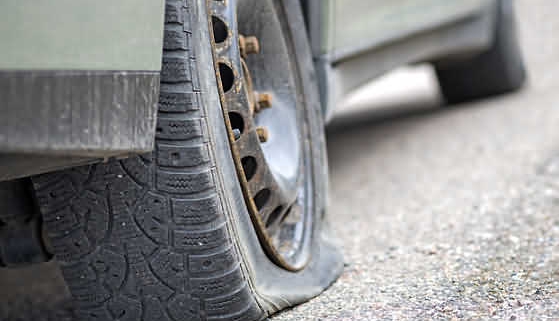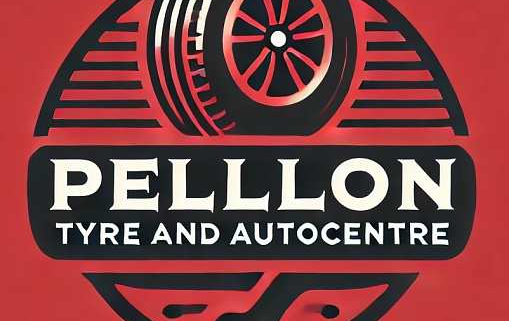Heat Causes More Tyre blowouts
Table of Contents
Heat Causes More Tyre blowouts
Heat Causes More Tyre blowouts

So, this is good advise from the attached article (Garage Wire). Importantly, any extra heat buildup will put any suspect tyres at risk. I am thinking mainly about tyres that have not been repaired correctly. Of course, this brings me to worn tyres. In my humble opinion, unless these tyres are tested, motorists could be driving on death traps.
Well worn tyres also come into this category. There is no excuse to be driving along on bald worn out tyres. However it is still surprising at the number of my customers in Halifax UK are driving about on such tyres.
Knowing How Tyres Are Manufactured and Why Heat Can Cause Blowouts
The last thing you want on a sweltering summer day is a tyre blowout when you’re speeding down the motorway. Nonetheless, this becomes a more frequent worry during the UK’s warmer months, especially on those infrequently extremely hot days. Every driver needs to be aware of the link between blowouts, high temperatures, and tyre manufacturing. Let’s examine how tyres are constructed and the reasons why driving in high heat can lead to unexpected problems at the roadside.
Tyre Manufacturing: A Heating Process-Heat Causes More Tyre blowouts
The tyre manufacturing process is a multi-step, high-temperature procedure. The fundamental components of a tyre are rubber, fabric, and wire, along with additional chemical elements intended to improve the tire’s durability, strength, and flexibility.
Mixing and Milling: The rubber compound is first combined with silica, carbon black, and other chemicals in large mixers that produce a lot of heat. The components are effectively bound together by this heat.
Constructing the Tyre: After the rubber is combined, it is shaped into sheets and stacked on top of a drum that forms tyres layer by layer. Sidewalls, tread, and the bead—which aids in the tire’s adhesion to the rim—are all put together. The performance and longevity of the tyre depend heavily on how precisely these layers are layered.
Here’s when the heat really becomes intense: vulcanization. The tyre is heated to high temperatures and pressures while inside a mould. The rubber takes on its final form, including the tread pattern and brand marks, as a result of this process, called vulcanization. During the vulcanizing process, temperatures frequently rise above 150 °C.
The Blowout Road: Tyres, Heat, and Pressure
Your tyres automatically heat up when you drive because of the friction from the road and the rubber’s flexing. When summertime temperatures are included, the accumulation of heat can become even more noticeable. This results in blowouts, as follows:
Enhanced Air Pressure: The temperature has an effect on the air pressure in tyres. The air inside the tyre expands with every 5°C increase in temperature, resulting in a pressure increase of roughly 1 PSI. This extra pressure may drive your tyres over the edge if they are already nearing or above their maximum rated pressure due to improper inflation.
Compromised Tyre Integrity: The rubber compounds in your tyres might break down more quickly in high temperatures, leaving them more vulnerable to harm. The rubber ages and becomes more brittle and less elastic, which raises the possibility of a blowout.
Overuse and Tear: Tyres that are underinflated may bend more than they should, which will cause them to retain heat longer. Conversely, tyres that are overinflated have uneven wear and are more vulnerable to damage from road debris and potholes. Potential tyre failure is set up in both cases.
Avoiding Heatwaves and tyre blowouts
In hot conditions, take into consideration the following advice to avoid blowouts:
Check Tyre Pressure Frequently: Heat Causes More Tyre blowouts
Try to do this once a month, especially before lengthy journeys while the tyres are still cold. In order to account for both the temperature outside and the load on your car, adjust the pressure in accordance with the manufacturer’s guidelines.
Regularly inspect your tyres for wear indicators such as cracks, bulges, or bald areas. These may point to tyre spots that are more likely to blow out under load.
Prevent Overloading: Especially in hot weather, going beyond your car’s maximum load capacity will put undue stress on your tyres.
Drive Caution: Rapid acceleration raises tyre temperature. On those sweltering summer days, you can lessen the chance of a blowout by maintaining a modest speed.
You may better maintain your car’s tyres and prevent the unpleasant surprise of a blowout by being aware of how tyres are created and how high temperatures affect them. This summer, drive safely, stay hydrated, and maintain your air pressure!
Stick to new tyres if possible! Heat Causes More Tyre blowouts
Of course, as the owner of a tyre centre, I would say this, wouldn’t I? However, it makes more sense to stick to buying new tyres where possible. Here at Pellon Tyres in Halifax, we try our best to give our customers a good deal. We stock and offer a great range of quality, brand-new tyres. All are brand new and much safer in hot weather, such as we have recently witnessed.
- Sunbeam Rapier Cross Ply Tyres
- Vauxhall Corsa Bad Fuel Smell
- Ford Ranger Tyre Wire Showing
- Electric Cars More dangerous
- Peugeot Exhaust MOT Fail
Motorists have this week been suffering with tyre blowouts this week after the UK was hit with its highest ever recorded temperatures. Driver were urged to remain vigilant as tyres are at a much bigger risk
Source: Tyre blowouts surge following excessive UK temperatures
Pellon Tyres is now a member of Tyresafe.org to promote tyre safety in Halifax
